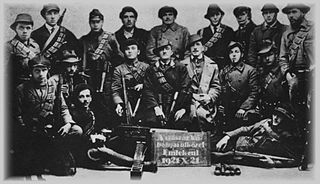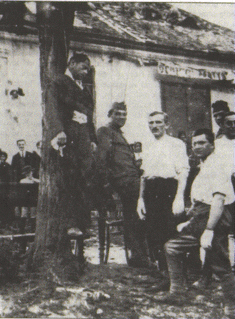 W
WParliamentary elections were held in Hungary on 25 and 26 January 1920. However, they were only held in 164 districts. After the Treaty of Trianon was signed, the 44 districts previously occupied by Romania voted between 13 June and 5 July, whilst the 11 districts occupied by Serbia did not vote until 30 and 31 October 1921. The election was held with compulsory voting. In protest at this and other changes to the franchise that left 60% of the voting age population unable to vote, the Hungarian Social Democratic Party boycotted the elections, and called for its supporters to cast invalid votes, resulting in an unusually high number of blank or invalid votes - 11.8% in the January elections and over 20% in Budapest and other major cities.
 W
WAfter Miklós Horthy was chosen Regent of Hungary on 1 March 1920, Charles I of Austria, who reigned in Hungary as Charles IV, made two unsuccessful attempts to retake the throne. His attempts are also called the "First" and "Second Royal coups d'état" respectively.
 W
WLajtabánság or Banate of Leitha was a short-lived western Hungarian state in the region where the Austrian federal state of Burgenland now exists. It existed between October 4 and November 10, 1921, following the Treaty of Trianon and the departure of the rump Kingdom of Hungary's army and after the Sopron plebiscite was held in the area according to the Venice protocol.
 W
WThe "Rongyos Gárda" were a non-regular paramilitary unit in Hungary, active in 1921 then reestablished in 1938.
 W
WThe Serb-Hungarian Baranya-Baja Republic was a short-lived, Soviet-oriented mini-state, proclaimed in Pécs on 14 August 1921, on occupied Hungarian territory during the peacemaking aftermath of the first World War, tolerated and fostered by the newly proclaimed Kingdom of Serbs, Croats and Slovenes. Its territory included the geographical region of Baranya and the northern part of Bačka region, as well as a portion of the Banat.
 W
WAccording to the Treaty of Trianon, the city of Sopron in western Hungary and its surroundings were assigned to Austria. After an uprising in 1921 in this region, a referendum was held and 65.8% of the votes were in favor of belonging to Hungary. This referendum was accepted by the major powers and the transition of Sopron and its surrounding 8 villages from Austria to Hungary was the only serious territorial revision in the years following the Treaty of Trianon.
 W
WThe White Terror in Hungary was a two-year period (1919–1921) of repressive violence by counter-revolutionary soldiers, carried out to crush any opposition supportive of Hungary's short-lived Soviet republic and its Red Terror. Many of the victims of the White Terror were Jewish. During the White Terror, tens of thousands were imprisoned without trial and as many as 1,000 people were killed.